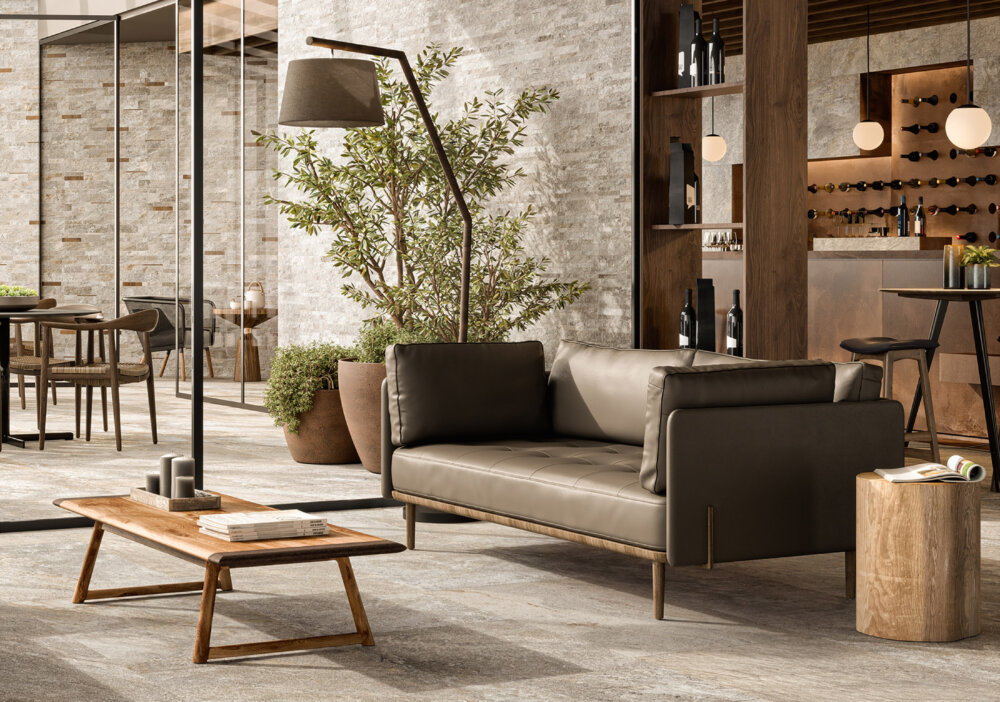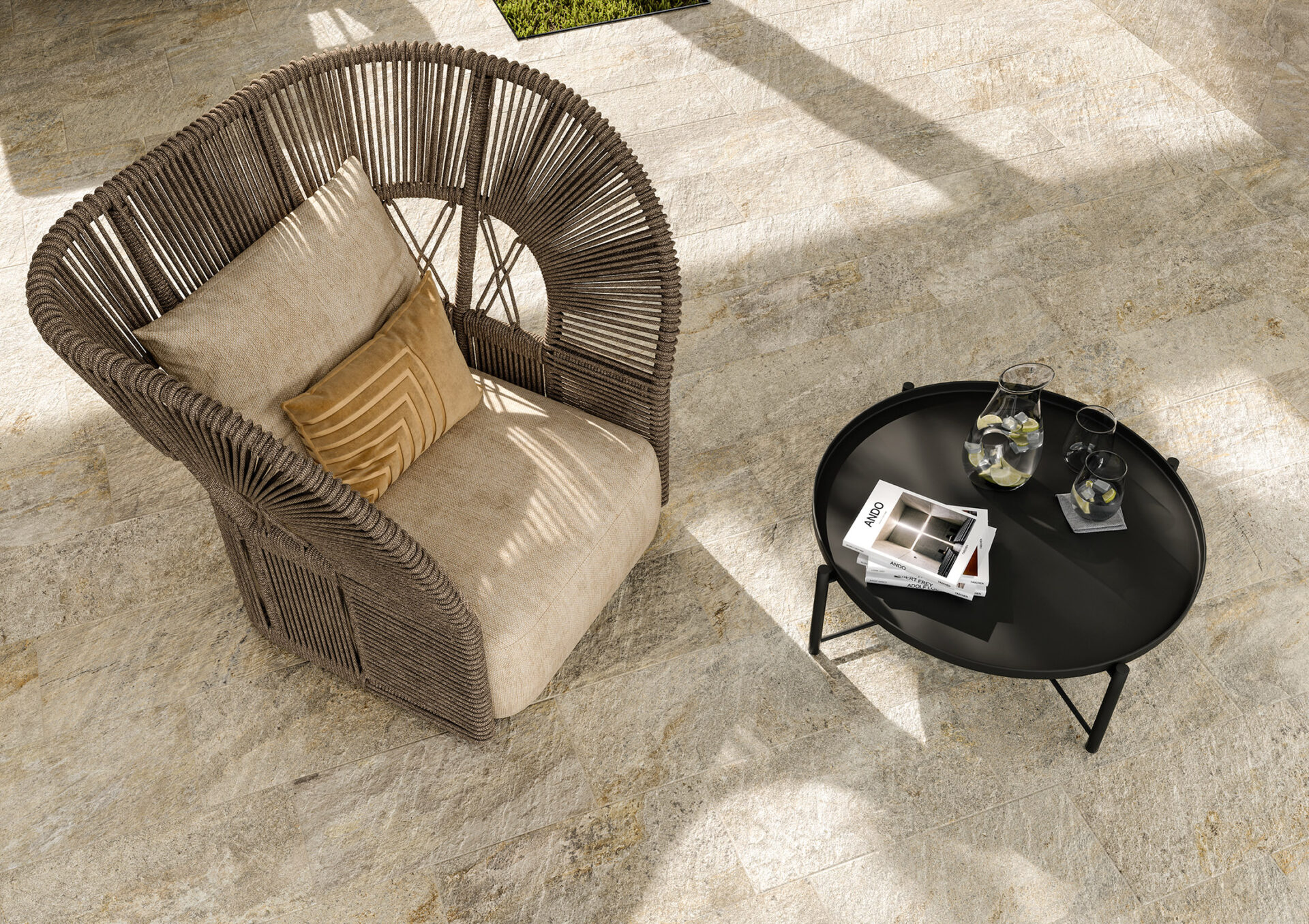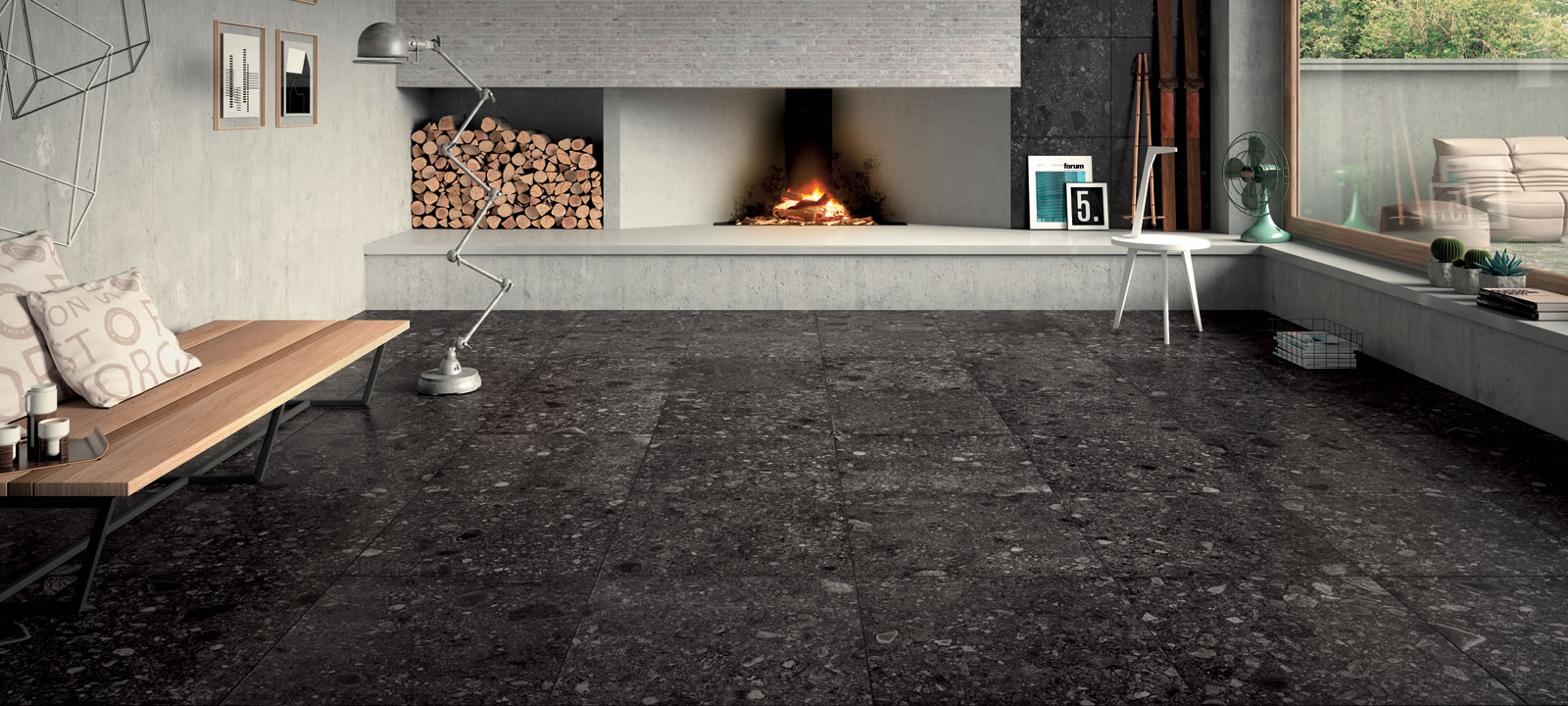Posted in Minoli
7th November 2022
Trend 02 – The Splendour of Stoneware.
The second of our articles looking into the latest design directions and production technologies that are set to take centre stage in 2023 and beyond.
Cutting edge manufacturing techniques take porcelain stoneware to new levels of realism and bring new dimensions in texture and tone. Not only are we seeing unprecedented representation of the irregular markings found in natural stone but also new surface treatments that enable a greater diversity of finishes, for use inside and outdoors.

Leading designers have sought inspiration from the most unique and expressive Italian stoneware. From the mellow tones of limestone, to the glitter and graining of granite and the playful pebble-patterns of sedimentary rock, cutting edge surface treatments will allow architects and interior designers to incorporate stone-effect porcelain as never before.
While natural stone can often be seen as the most authentic solution for period buildings, traditional homes and new builds, in today’s house building and corporate construction markets, more savvy developers and designers are turning to porcelain tiles as the viable and desirable contender.
Over natural stone, porcelain tiles are more durable, stain and fade resistant, easier to clean and maintain, do not require sealing, are more uniform in production and so easier to install. With crisp rectified edges and exact calibrated sizes, porcelain products can be fitted with greater precision allowing for highly technical designs to be realised within commercial properties and private residences.
We’ve seen a renaissance in the specification of stone-effect surfaces from those seeking to fuse contemporary design with more classic environments. The technically advanced Boost Stone series, for instance, is inspired by limestone extracted from the French Pyrenees but has a remarkable modern and micro-fine finish, is available in ten creative colourways and sizes ranging from the expansive 278/120 slabs through to delicate, decorative mosaics. This sublime collection can also be paired with complimentary outdoor tiles of 20 mm thickness, creating continuity between your interior and exterior living spaces.
Another example of advancements in porcelain manufacturing is the Minoli Norde range which is designed with the look of quartzite stones that, through a varied mineral composition, feature colour change and movement as light plays across their structured surfaces. The particular product strengths of Norde are the detailed graphics, varied shades, rich colours and the authentic interpretation of their organic origins.

We’re also seeing designers experimenting with mixed surfaces from different but complementary ranges. The broader colour palettes available allow for new colour matching opportunities, so creating tone-on-tone combinations or contrasts that yield spaces with different atmospheres and stylistic accents. More intricate patterns from ranges such as Norway can be installed alongside softer, limestone-effect designs, for example Norway Vit paired with Epik Shell, or Norway Svart delivering a distinct step change against Coast Light.

At the forefront of stone-effect production innovations for 2023 are new finishing techniques that emulate Vein Cut exposing linear streaks in the pattern, and Cross Cut that reveals more distinct colour variation adding a greater dimension of depth to designs.
Later this week we’ll provide a first glimpse of the future additions to our stone-look product portfolio with new travertine-style products and designs inspired by the Ceppo di Gré stone from the shores of the Italian lakes.